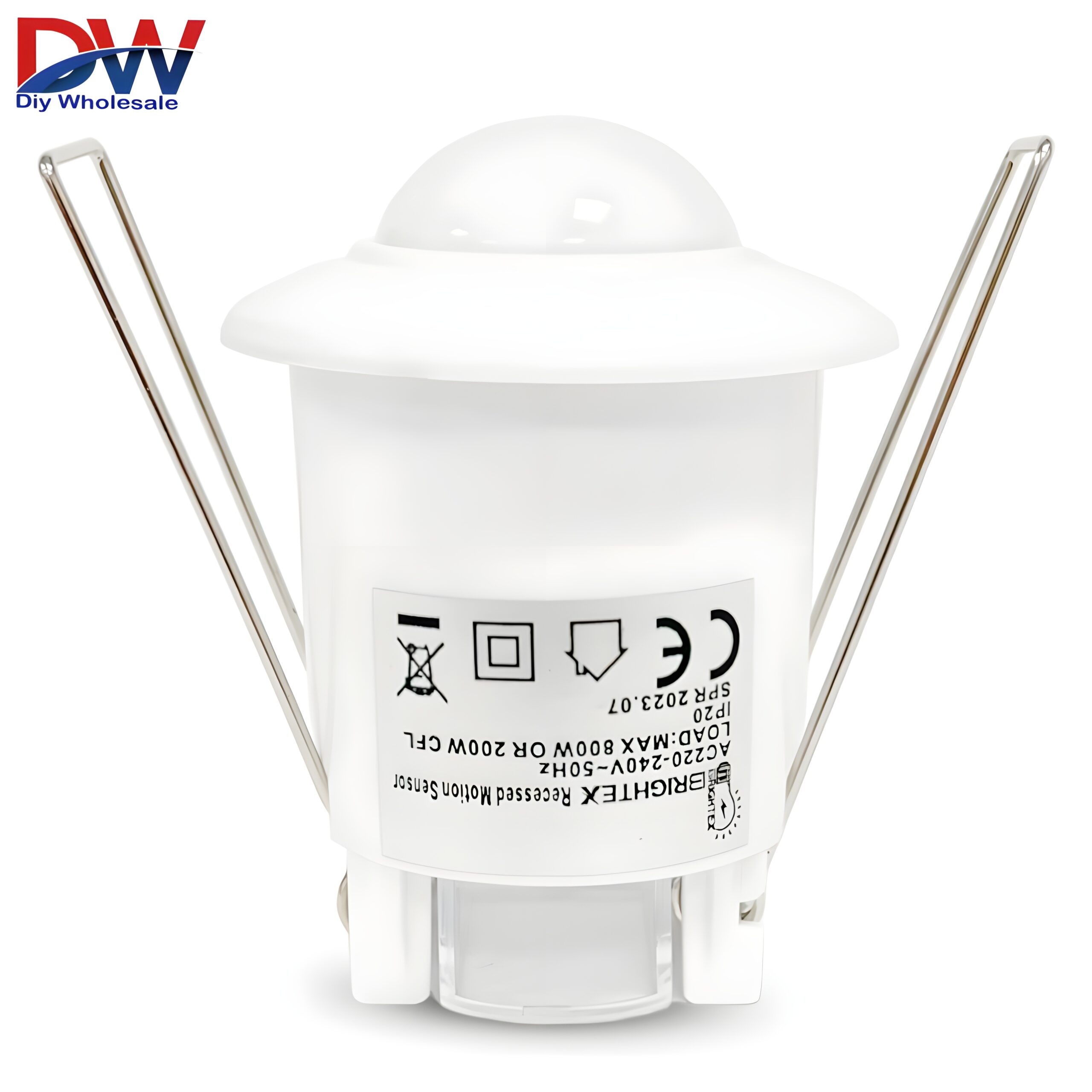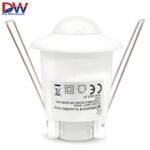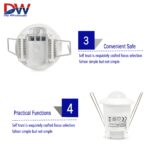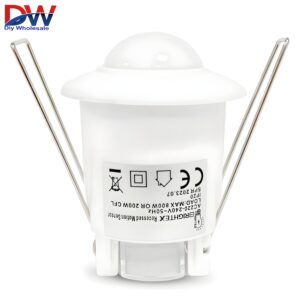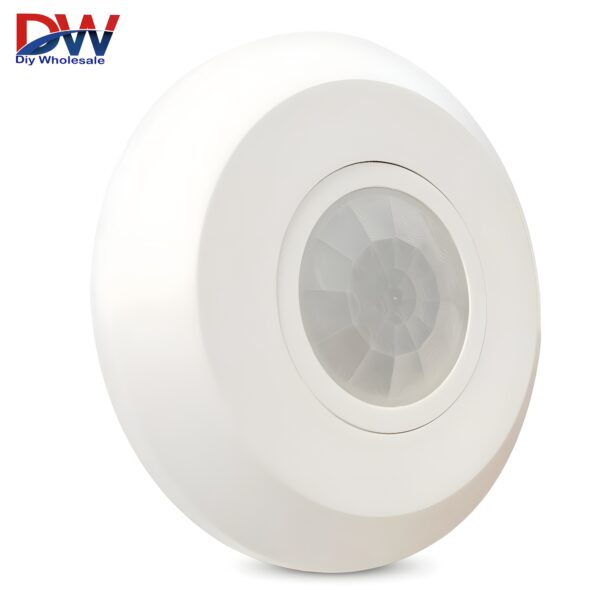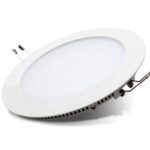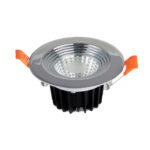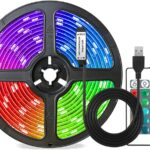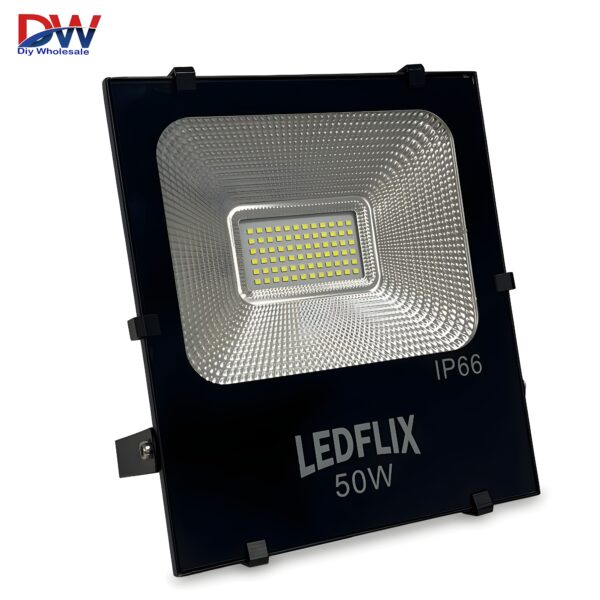
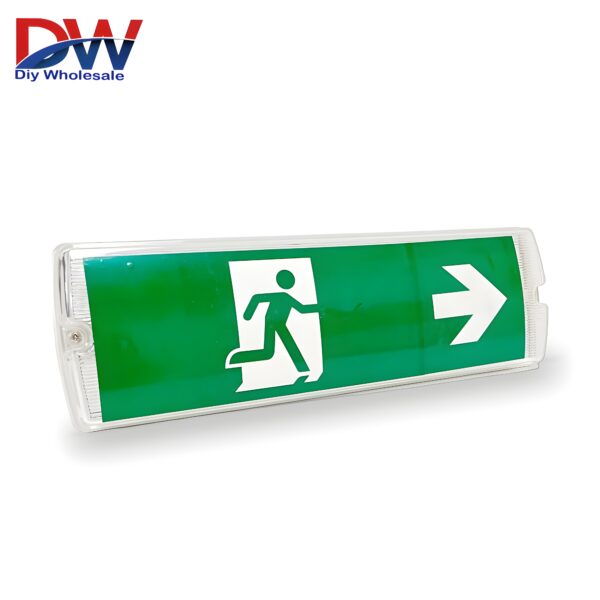
Infrared Recessed Motion Sensor light
£5.60 Inc. Tax£5.60 Exc. Tax
| Model | MSR-1 |
| Wattage | 200 day |
| 800 night | |
| Voltage | AC220-240V |
| Frequency | 50/60Hz |
| Time setting | 15min |
| Light -control | <3 -2000 LUX |
| Size | 50x50x40mm |
| Detection-range | 8m Max(24 °C) |
| Detection-angle | 360 ° |
| Working Temperature | – 20°C~+40°C |
| Working humidity | <93%RH |
| Installation height | 2.2m~4m |
| Power consumption | 0.5W |
| Detection speed | 0.6~1.5m/s |
About Infrared Recessed Motion Sensor light
An infrared recessed motion sensor is a specialized type of motion detection device designed to be discreetly embedded or mounted within a ceiling, wall, or other surface. These sensors are commonly used in commercial and residential settings for security, lighting control, and automation. Here’s a general description of an infrared recessed motion sensor:
- Technology: Infrared recessed motion sensors typically use passive infrared (PIR) technology to detect motion. They rely on changes in heat patterns within their detection range to identify motion. When a warm object, such as a person, moves within the sensor’s field of view, it triggers a response.
- Recessed Design: The term “recessed” indicates that the sensor is designed to be installed within a cavity in a ceiling, wall, or other surface. This design choice allows the sensor to be discreet and less noticeable in the room’s aesthetics.
- Detection Range: The detection range of an infrared recessed motion sensor can vary based on the specific model and its intended use. These sensors are available in different detection ranges to suit various room sizes and requirements.
- Sensitivity Adjustment: Many recessed motion sensors allow users to adjust the sensitivity and detection angle to customize the sensor’s response to motion. This feature is valuable for fine-tuning the sensor’s performance to specific needs.
- Applications: Infrared recessed motion sensors are used in various applications, including:
- Automatic Lighting Control: They are commonly used to control lighting in spaces such as offices, hallways, restrooms, and conference rooms. When motion is detected, the sensor triggers the lights to turn on, and they automatically turn off when the space is unoccupied, promoting energy efficiency.
- Security Systems: These sensors are often integrated into security systems to detect unauthorized entry or movement within a specific area. When motion is detected, an alarm or notification can be triggered.
- Home Automation: They are integrated into home automation systems to trigger various actions like turning on lights, adjusting thermostats, or activating other smart devices in response to motion.
- Installation: Installation of a recessed motion sensor may require professional electrical work, as it typically involves cutting holes in ceilings or walls and connecting the sensor to the electrical system.
- Power Efficiency: Recessed motion sensors are highly power-efficient, as they are only active when motion is detected. This helps conserve energy and extend the life of connected devices or lighting.
- Environmental Impact: The use of recessed motion sensors can contribute to energy savings and lower carbon emissions by ensuring that lights and other devices are only active when needed.
Also, check:
Infrared Surface Motion Sensor light
Delivery
Free delivery for order over £50
All orders are sent out in a daily basis. In normal cases it should be delivered within 2-3 days. Please speak to one of our team in case your order didn’t arrive within 5 days from the order placing date.
Once you place the order, you will receive a confirmation email with VAT invoice attached and followed by another email with your order tracking number.
Return
All items are subject to 30 days return with full refund or replacement as long as the items is returned in the same condition as it delivered (Product is not used and box are intact).
All items are subject to 12 months return in case of manufacture faults.
We pay for the faulty items post in case we need to collect the faulty items. We pay also for the post of the replacement.
If it posted, faulty items will be replaced once received and tested.
All items should be used as per the specs mentioned on the boxes, For example, IP20 items are not usable for outdoors
Above conditions are apply for all items except customed items (Like printed sky panels light that are printed on request, or cut led strips, or similar items that are customed as per customer requests) or wherever stated
Items that have signs of repair, modification or tampered are not obliged to offer a refund or exchange
How can I get VAT invoice?
Once payment is done, you will receive email confirmation with VAT invoice attached with the email.
How can I track my orders?
After payment, you will receive email with the tracking number of your order.
How can I cancel part of the order or the full order?
You can use any of our communication channels to arrange the cancelation and item return, if any.
How can I get refunded?
We process the refund immediately after receiving the returned items and do the proper inspection. The payment will be processed using the same original payment method
How can I make change to my order (include change of the delivery address)?
You can use any of our communication channels to change any part of your order.
What I do if I face any issue with my order, include delivery issues?
You can use any of our communication channels to report the issue. Rest assure that we will solve it ASAP.
What does the 30 days free returns means?
All our products are returnable within 30 days of the invoice date with full refund.
When to collect my items, if I choose collection option?
You need to arrange with us via any of our communication channels to arrange for pickup schedule.
What I do if I face any issue or have any inquiry?
We are reachable 24/7 over WhatsApp, live chat, messenger, and emails.

